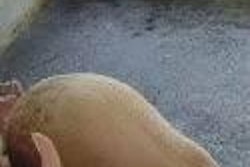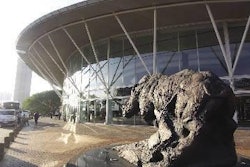Poultry farming has become an increasingly popular target for an increasingly carbon-frenzied media. The general public are being ‘egged on’ by an international media pre-occupied with carbon footprints, carbon emissions and poultry production that is sustainable – almost certainly now the most over-used, misused and abused words in the English language.
Poultry farms are unavoidably faced with disposal of large quantities of poultry waste and litter, mainly bedding soiled with faeces, feathers and other organic waste. Use as fertiliser and fuel are most common routes of disposal but transporting huge volumes to centrally located power stations to burn for energy rather defeats the whole object of energy conservation.
Risk of infectious diseases like avian influenza may rule out this option as well as use of fertiliser unless properly digested by microbes. Poultry waste from the H5N1 infected Bernard Matthews’ turkey farm in Eastern England (UK) could not be taken to the local power station for incineration for fear of upsetting other poultry farm suppliers.
To the rescue come scientists and technologists at the School of Chemical Engineering and Analytical Science (CEAS) at the University of Manchester. They are working to develop a small-scale power plant for on-farm use that destroys poultry litter while simultaneously generating electricity and heat to keep growing birds warm. The project is supported by Carbon Trust and Keld Energy and could lead, claim the scientists, to poultry farms of the future and their local communities being powered entirely by poultry waste.
Project leader, Dr Alastair Martin, says, “We envisage that excess electricity will be exported to the grid as ‘green energy’ thus converting what is currently an environmental liability into a substantial income stream.” A single plant could provide all the heat required by the average poultry farm and significant excess power too, while providing a bio-secure and environmentally sound way of getting rid of poultry waste and litter.
These small power plants are being designed so that a single unit can utilise the farm’s entire load of litter and droppings to provide all electric power required by the farmer and possibly some extra too.
Dr Martin and his team are working towards integration of a fluid bed gasifier – a device capable of converting biomass waste products into a combustible gas – with a small-scale gas turbine, as well as investigating the best strategy for managing energy thus generated.
Once the research and development is complete, it should be possible to deliver the generated fuel gas to a turbine engine in an efficient manner. Net result will be design and specification of the first full scale prototype of a small-scale power plant for on farm use The project team is aiming at development of a system to generate 200kW electrical power. It will have an anticipated ‘poultry-litter-to-power’ efficiency of approximately 30%, which is 10% greater than that offered by existing technologies.
For temperate countries like the United Kingdom, most of the energy developed from the farm’s resources on the farm will be used to keep the poultry warm especially during winter. The system is also appropriate for tropical climates to keep birds cool.

















